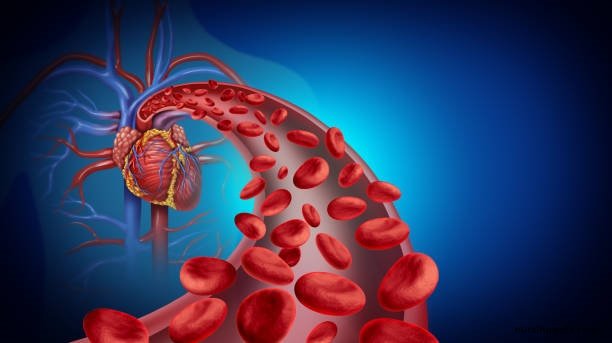Today our topic of discussion is ” Homeostatic Regulation of the Vascular System “. Homeostasis, the body’s ability to maintain a stable internal environment despite external changes, is fundamental to human health. The vascular system, comprising blood vessels that distribute blood throughout the body, plays an instrumental role in this equilibrium. This article delves into the intricacies of how the body ensures a homeostatic balance within the vascular system, safeguarding essential processes like nutrient delivery, waste elimination, and temperature regulation.

Homeostatic Regulation of the Vascular System: Blood Vessels and Circulation
1. Introduction: Homeostasis and the Vascular System
The vascular system consists of arteries, veins, and capillaries that transport blood under the influence of the heart’s pumping action. For the body to function optimally, the cardiovascular system must consistently deliver oxygen and nutrients to tissues and remove waste products. The homeostatic mechanisms ensure this steady state is maintained.
2. Blood Pressure Regulation
Blood pressure (BP), the force exerted by blood on vessel walls, is a critical parameter. If too high or too low, it can compromise organ function. Several mechanisms regulate BP:
- Baroreceptors: Located in the carotid sinuses and the aorta, these nerve endings detect BP changes. If BP rises, the baroreceptors stimulate the heart to decrease its rate and force of contraction, and the blood vessels to dilate, returning BP to normal.
- Renin-Angiotensin-Aldosterone System (RAAS): When BP drops, the kidneys release renin, leading to a cascade that results in the production of angiotensin II, a potent vasoconstrictor. Simultaneously, aldosterone secretion prompts the kidneys to retain sodium and water, increasing blood volume and BP.
- Kidney Regulation: The kidneys adjust blood volume by filtering and reabsorbing water and solutes. An increased blood volume can elevate BP, while a decreased volume can reduce it.

3. Blood Volume Maintenance
Regulation of blood volume is vital to avoid conditions like dehydration or edema:
- Antidiuretic Hormone (ADH): Released by the posterior pituitary in response to dehydration or high blood osmolarity, ADH prompts the kidneys to reabsorb more water, increasing blood volume.
- Atrial Natriuretic Peptide (ANP): Released by the heart’s atria when blood volume is too high, ANP promotes sodium and water excretion by the kidneys, decreasing blood volume.
4. Oxygen and Carbon Dioxide Levels
Oxygen delivery and carbon dioxide removal are vital for cellular function. Mechanisms regulating these include:
- Chemoreceptors: Found in the carotid bodies and the brain, these receptors detect changes in blood pH, oxygen, or carbon dioxide levels. Low oxygen or high carbon dioxide levels stimulate the respiratory center in the brain, increasing the rate and depth of breathing.
- Bohr Effect: Hemoglobin’s affinity for oxygen decreases as carbon dioxide levels rise, ensuring tissues get more oxygen during high metabolic activity.
5. Temperature Regulation
Blood flow aids in temperature regulation:
- Vasodilation: In hot conditions, vessels, especially those near the skin, expand, promoting heat loss.
- Vasoconstriction: In cold environments, vessels constrict, reducing heat loss from the body’s surface.

6. Nutrient and Waste Regulation
To maintain homeostasis, the vascular system ensures adequate nutrient delivery and waste removal:
- Insulin: After meals, the pancreas releases insulin, promoting glucose uptake by tissues.
- Liver Function: The liver plays a pivotal role in maintaining nutrient balance, storing excess glucose as glycogen, and releasing it when blood glucose levels drop.
- Kidney Function: Besides their role in BP regulation, the kidneys filter out waste products like urea, ensuring they’re excreted in urine.

7. Challenges to Homeostasis
Despite the body’s best efforts, several factors can challenge vascular homeostasis:
- Aging: With age, blood vessels may become less elastic, leading to conditions like hypertension.
- Disease: Diabetes, kidney diseases, or hormonal imbalances can disrupt homeostatic mechanisms.
- Lifestyle: Poor diet, lack of exercise, and smoking can challenge vascular homeostasis.
8. Conclusion
The vascular system’s homeostatic regulation is a testament to the body’s intricate design and its ability to adapt to changing conditions. Multiple mechanisms, often overlapping, ensure the body’s internal environment remains stable, promoting health and vitality. Understanding these processes is not only academically rewarding but also emphasizes the importance of lifestyle choices that support and enhance these natural regulatory systems.
Read more:
